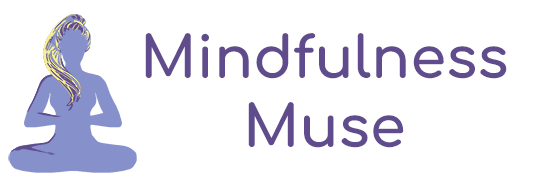The Importance of Mindfulness in the Workplace

“Without giving up hope—that there’s somewhere better to be, that there’s someone better to be—we will never relax with where we are or who we are.” – Pema Chödrön
How do you “show up” at work? We spend so much of our lives devoted to academic and career-related pursuits, that it’s worth asking ourselves how the work environment and culture that we’re a part of fits with our most authentic selves. One way to go about doing this is to spend some time identifying your core values, and mindfully considering how these personal values are reflected in our school or company’s culture, our job descriptions, and our basic job functions. How much of your truest self do you have to give up in order to perform at your best in the workplace?
According to the American Institute of Stress, 80% of people feel stress in the workplace. Not only that, but the US Centers for Disease Control and Prevention report that a staggering 75% of all doctor’s office visits are stress-related in nature. These numbers alone are enough to serve as a wake-up call to let us know that the workplace tends to be a significant source of stress for so many of us. It’s crucial to consider strategies that we can employ in our daily lives to serve as a buffer against the negative impact of work-related stress on our lives. Mindfulness is one avenue towards dampening the effects of stress on our physical, mental, and emotional health.
According to Warr (1987), there are nine basic factors in the work environment that contribute to mental health, or quality of working life: (a) opportunity for control, (b) opportunity for skill use, (c) externally generated goals, (d) variety, (e) environmental clarity, (f) availability of money, (g) physical security, (h) opportunity for interpersonal contact, and (i) valued social position. Warr (2007) considered these factors to serve a “vitamin” or protective function, and contended that the lack of these nine factors could lead to decreases in levels of overall well-being. How well are these nine basic factors being met in your current work environment?
Learning to be more mindful in the workplace can help reduce your overall stress levels, increase your present moment awareness, and even improve the quality of the interactions you have with coworkers. Consider how present you typically feel on any given work day… does the average work day feel like a drag? Do you find yourself bored, or watching the hours go by? Or perhaps, do you find yourself so busy and flooded with activity, that you barely have time to pause to take a deep breath? Whatever your current level of mindfulness is in the workplace at present, there is always room for improvement.
Tips for Increasing Mindfulness in the Workplace
Consider these tips for increasing your own level of mindfulness in the workplace and choose one you’d like to begin practicing right away:
Make Mini-Meditations a Habit
Take between three and five minutes out of your workday to intentionally practice mindfulness. This can be as simply as setting a reminder on your phone to take ten slow deep breaths in… and out… before you go on your lunch break. This could also mean making practicing everyday mindfulness by choosing to focus on your work in a deliberately slower, more intentional, open, curious, and nonjudgmental manner.
Practice “Office Yoga”
This idea of “office yoga” may sound a bit silly at first, but all it needs to mean is to practice some gentle stretching at your desk. It might mean reminding yourself to stand up and stretch your arms over head, or side to side, every once and a while. If you have a job where you have the opportunity to be less sedentary, take advantage of your time “on the move” to stretch your body and take in some cleansing deep breaths. Think of this as mindfulness in motion.
Be Present with Others
People can generally tell when another person appears to be distracted, thinking of something else, or not paying much attention. One of the greatest gifts that we can give to another person is our full attention. Consider ways in which intentionally paying attention to what your coworkers are saying to you, how they’re saying it, and the emotion(s) behind it. You may be surprised how different your interactions with other people can become when you adopt a more mindful interpersonal stance.
– – – – – – – – – – – – – – – – – – – – – – – – – – – – – – – – – – – – – – – – – – – – – – – – – – – – – – – – – –
Warr, P. B. (1987). Work, unemployment and mental health. Oxford, England: Clarendon Press.
Warr, P. B. (2007). Work, happiness, and unhappiness. Mahwah, NJ: Erlbaum.
Featured image: working by little birth / CC BY 2.0
